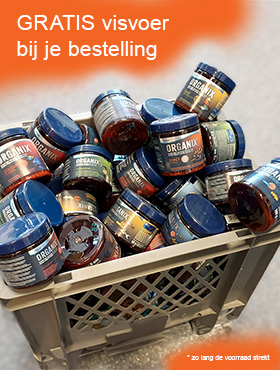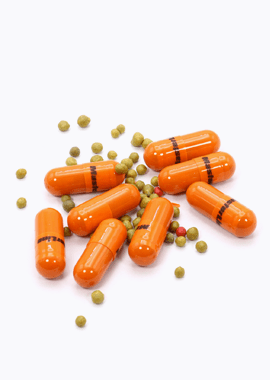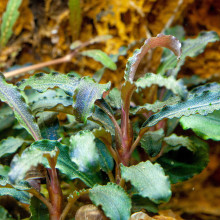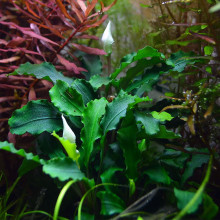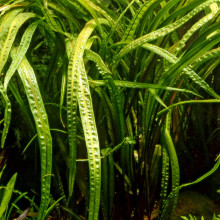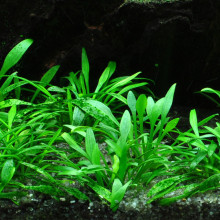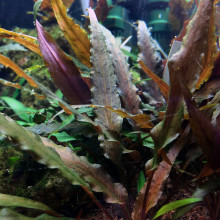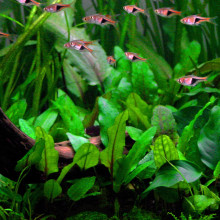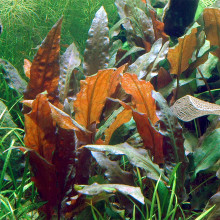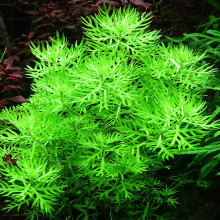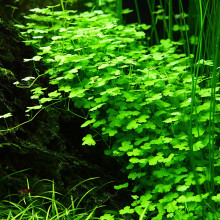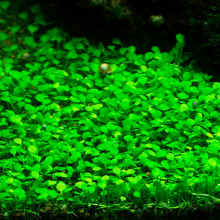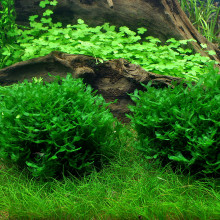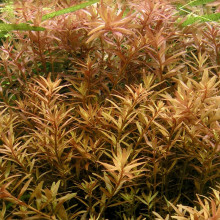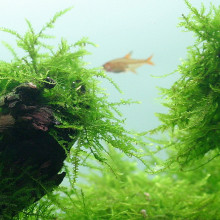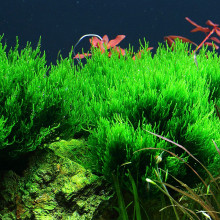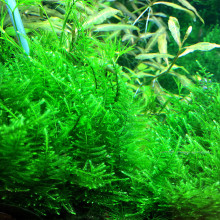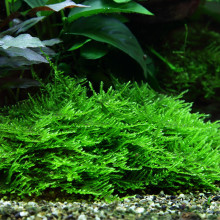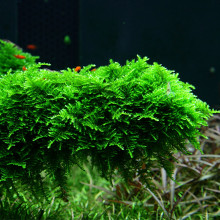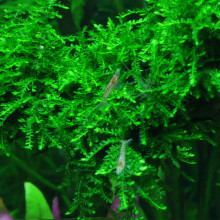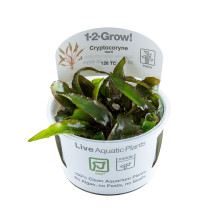In Vitro plants
In Vitro aquarium plants are grown in a laboratory under steriel conditions. Tiny pieces of tissue plant material is placed on special gel to grow new healthy, algae free, pesticide free, snail free and germ free plants in a cup. One cup is richly filled with lots of young shoots, full of growth potention!
-
Bucephalandra 'Kedagang'Type: In Vitro Cup Pot€9.60
Bucephalandra 'Kedagang' grows naturally on stones and wood in rivers and streams, similar to Anubias. The maintenance and growth also corresponds to that of Anubias species and can be tied to wood or stone.
Supplied as an in-vitro cup or 5.5cm pot -
Bucephalandra pygmaea 'Bukit Kelam'Type: In Vitro Cup Pot€8.30from €6.64
Bucephalandra 'Wavy Green' grows naturally on stones and wood in rivers and streams, similar to Anubias. The maintenance and growth also corresponds to that of Anubias species and can be tied to wood or stone.
-
Cryptocoryne crispatulaType: In Vitro Cup Pot€7.25from €5.80
Cryptocoryne crispatula comes from southern Thailand where it grows in water that can be quite hard. The leaves of this aquarium plant are thin, corrugated and can grow 20-60cm long.
Available in Pot or Invitro cup -
Cryptocoryne parvaType: In Vitro Cup Pot€7.25from €5.80
Cryptocoryne parva comes from Sri Lanka and is the smallest of the Cryptocoryne species. The leaves are spoon-shaped and fresh green in color with a length of 3-6 cm.
Available in: pot or in vitro cup -
Cryptocoryne undulata 'Broad Leaf'€7.25from €5.80
This variant of Cryptocoryne undulatus grows wild in the rivers of Sri Lanka. It is an easy plant and tolerates a wide range of aquarium conditions. The appearance of the aquarium plant will depend on these conditions.
-
Cryptocoryne wendtii 'Green'Type: In Vitro Cup Pot€6.30from €5.04
Cryptocoryne wendtii 'Green' comes from Sri Lanka and grows to a size of 5-15cm in the aquarium. It is an easy aquarium plant, also suitable for a small aquarium.
Available in pot or in vitro cup -
-
Hottonia palustrisType: In Vitro Cup Pot€6.30from €5.04
Hottonia palustris is a stem plant from Asia and Europe with special leaves and which makes few demands on the aquarium.
-
Hydrocotyle tripartitaType: In Vitro Cup Pot€6.30from €5.04
Hydrocotyle sp. "Japan" is the popular name of this plant on the various forums. It is a variant of the Hydrocotyle tripartita from Southeast Asia and is characterized by its fast, compact growth and small, intense green leaves on vertical stems.
Available in Pot or In Vitro Cup -
Marsilea minuta€6.95from €6.26
Marsilea minuta is an ideal ground cover for an aquarium with less light. The leaves are very small and rarely become wider than 0.5 cm. The result is a beautiful carpet, which looks very similar to a Glossostigma carpet.
-
Monosolenium tenerum€6.95from €6.26
Monosolenium tenerum is an attractive species of liverwort for the aquarium with a height of 2-5cm. It looks very much like a giant Riccia, but it stays on the bottom where it forms cushions.
-
Rotala rotundifoliaType: Pot€4.35from €3.48
Rotala rotundifolia literally means "plant with round leaves". However, this only applies to the above-water form. This aquarium plant comes from Asia and has long, thin underwater leaves of 2-3cm with stems of 15-30cm.
Available in Pot or In Vitro Cup -
Taxiphyllum barbieriType: In Vitro Cup Portion€6.95from €6.00
Taxiphyllum barbieri is a species of moss that is very easy to keep in the aquarium. The moss comes from Asia and is therefore often referred to as Java moss. It grows up to 10cm thick and attaches to a variety of surfaces. Ideal for covering stones, back walls or driftwood.
-
Taxiphyllum 'Flame'€6.95from €6.26
Taxiphyllum 'Flame' is a moss species that owes its name to its special growth habit. The moss develops dense, wavy, vertically growing strands reminiscent of a campfire. The height is about 5 to 15 cm.
-
Taxiphyllum alternans 'Taiwan Moss'€6.95from €6.26
Taxiphyllum alternans 'Taiwan' grows horizontally and overhanging, somewhat similar to Weeping Moss. It is excellent to use to adhere to surfaces and then hide technology in the aquarium.
-
Taxiphyllum 'Spiky'Type: In Vitro Cup Portion€6.95from €6.26
Taxiphyllum 'Spiky' is a more robust moss species and forms thicker shoots. These are strongly branched with many 'leaves' and have a deep green color. A bit like the big brother of 'Christmas moss'.
-
Vesicularia montagnei 'Christmas'Type: In Vitro Cup Portion€6.95from €6.26
Vesicularia montagnei 'Christmas' is a species of moss for the aquarium originating from Brazil. It owes its name 'Christmas moss' to its structure with side branches that resembles a pine tree. There is a clear difference here with the standard 'Java moss'. The requirements for lighting, CO2 and nutrients are low and Christmas Moss grows in almost every aquarium.
-
Vesicularia ferriei 'Weeping'Type: In Vitro Cup Portion€6.95from €6.26
Vesicularia ferriei 'Weeping' is a species of moss for the aquarium originating from Asia. He is better known as Weeping Moss. The moss has a robust shape and grows downwards with fresh green growth points. The length is about 1 to 3 cm.
-
Cryptocoryne nurii€9.60from €7.68This beautiful Cryptocoryne originates from Malaysia. It is a medium-sized Cryptocoryne species with a special pattern on the leaf. The pattern seems to adapt to the lighting conditions.





